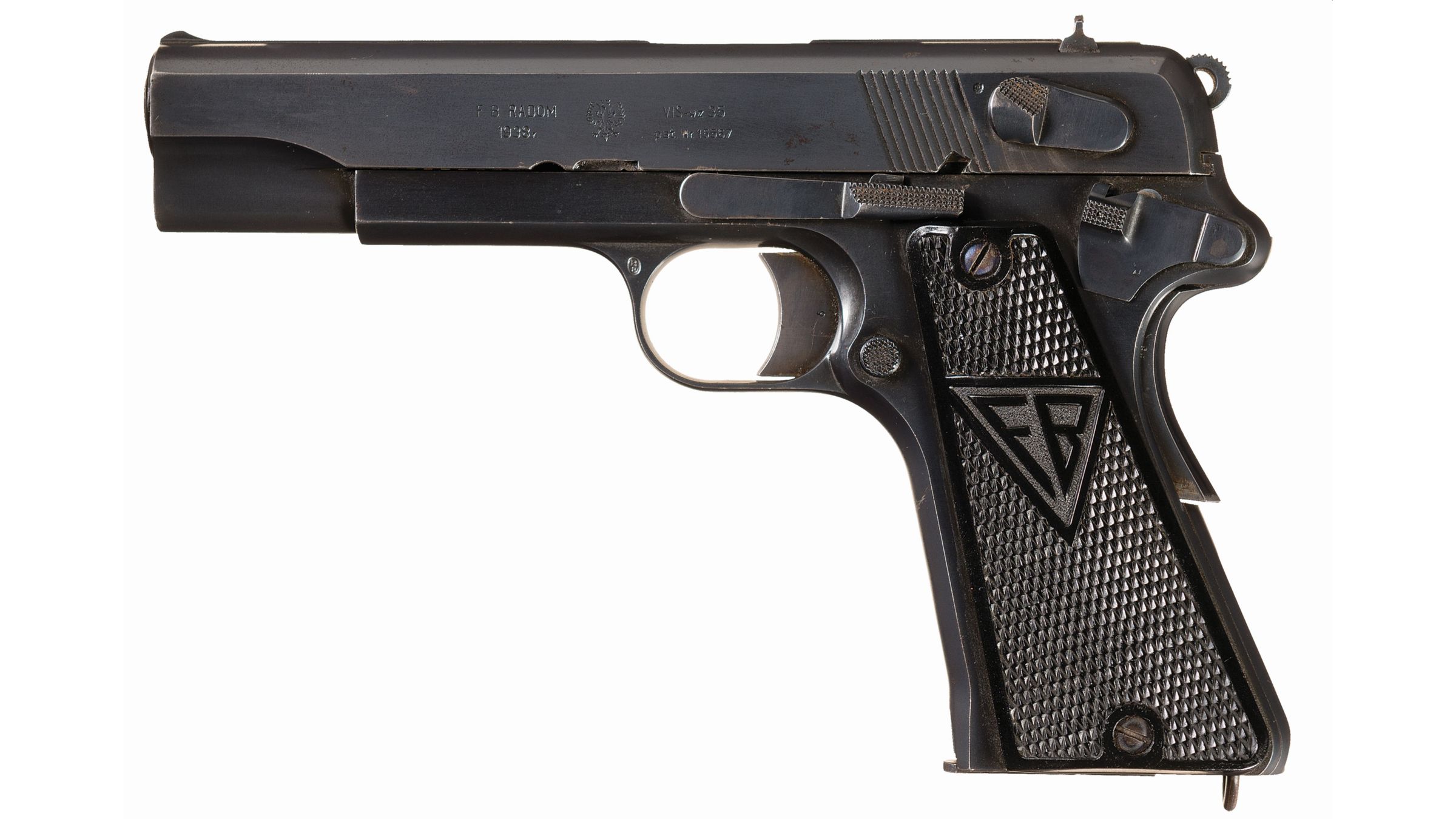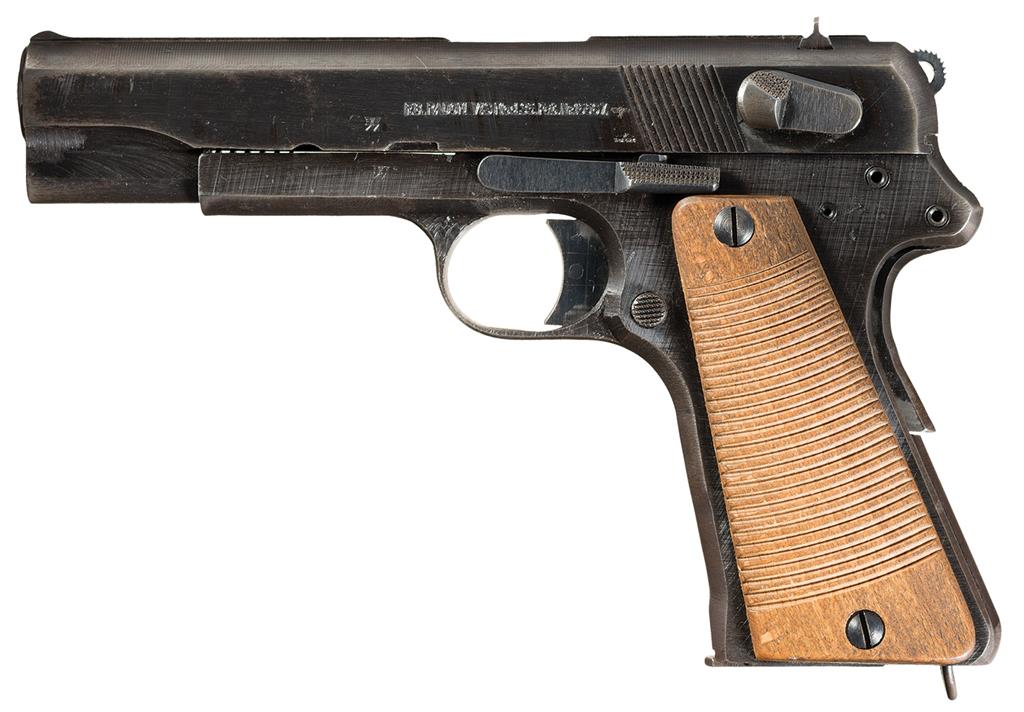

Grip for the shoulder stock /holster and the finely checkerd rib. Later on, this feature was discontinued, probably to speed up the production of the handgun. The grip, with its unique bell-shaped contour, has a pair of Bakelite scales with the FB (Fabryka Broni) logo and in the first series also a slot that allowed the attachment of the shoulder stock/holster. The weight of the gun with empty magazine is 36.15 oz/1025 grams.

The barrel measures 4.5”/115 mm, for an overall length of 8”/205 mm. As was the custom at the time, the sights were factory set at a distance of 25 meters.

The sights consist of an adjustable V-shaped rear notch and a front sight integral with the slide, placed at the end of a finely checkered rib. The pistol features an automatic safety on the back of the grip and a decocker on the slide. The single-stack magazine has a capacity of 8 cartridges and in contrast to the European fashion of the time, the release button is located close to the trigger guard. The Vis 35 is a locked-breech semi-automatic pistol in caliber 9mm Luger with a single-action trigger. But from the mechanical point of view, it is actually more similar to a Browning Hi-Power (HP-35), a gun of which it is a contemporary and that certainly Wilniewczyc and Skrzypiński had the opportunity to study. Often the Vis 35 is referred to as a copy of the 1911 chambered in 9mm Luger, and in fact many aesthetic features recall the US pistol. In 1936 it was officially adopted by the Polish army.Īt first, the acronym Vis should have been written as “WIS”, to allude to the initials of the designers Wilniewczyc and Skrzypiński, but the Polish military requested to change it to “Vis” to recall the Latin word meaning "strength". After the usual series of prototypes, tests and modifications, the Vis 35 pistol was accepted and went into production in 1935 at the Fabryka Broni (arms factory) in Radom. After a series of inconclusive tests, which involved companies such as Mauser, Breda and Skoda, the General Staff decided to accept an innovative project developed in Poland by engineers Piotr Wilniewczyc and Jan Skrzypiński in the early 1930s. 1898 rifle, actually a Mauser K98 built in the Gdansk arsenals, so it was necessary to select a service pistol. The newborn Polish army was equipped with the KbK Wz. This was also true for Poland, reconstituted by the Allies in 1918 as a buffer state between Russia and Germany. Serial number 12, but this is enough to make it extremely valuable.Īfter the end of World War 1, many European armies began to review their armament, based on direct experience or by studying the events of the war. On the right side of the record Vis 35 we find only the


 0 kommentar(er)
0 kommentar(er)
